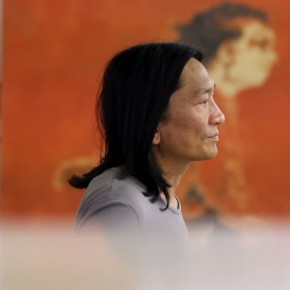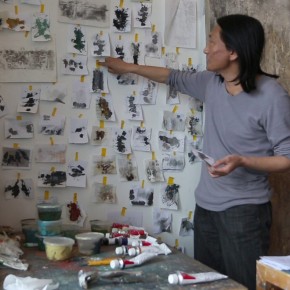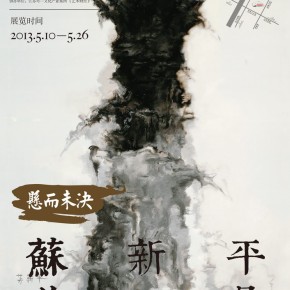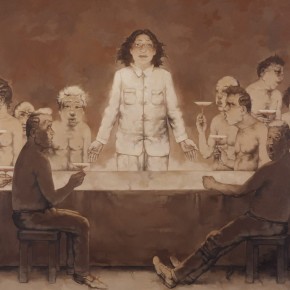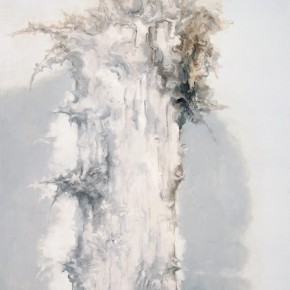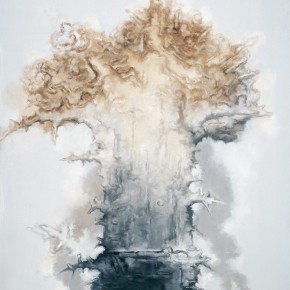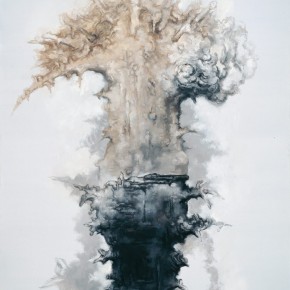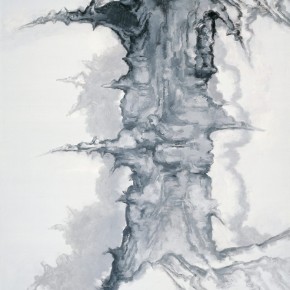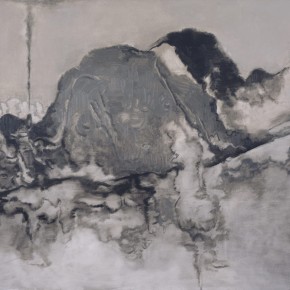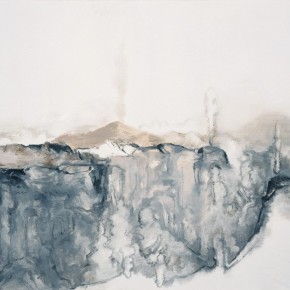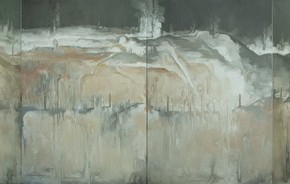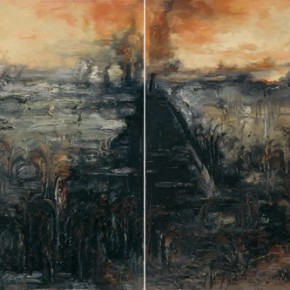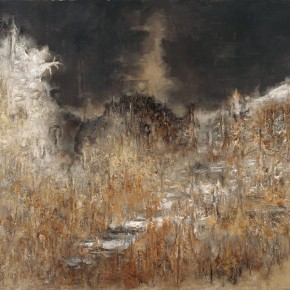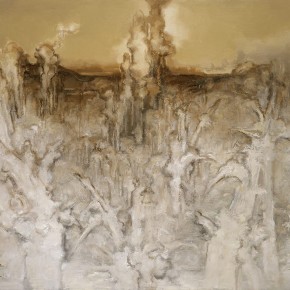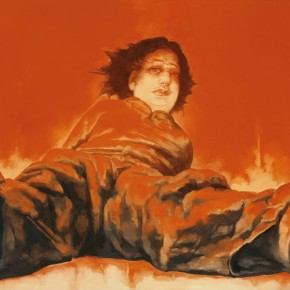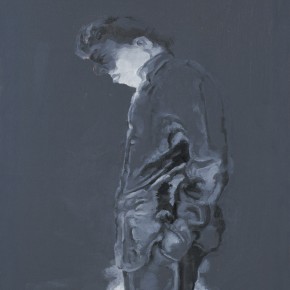
Interview Time: May 5, 2013
Interview Location: Su Xinping’s Studio
Journalist: Zhu Li, Transcript: Yu Ya
I believe “Pending State and Experiment” is the first solo exhibition of the last 6 years to be opened at the Art Museum of the Nanjing University of Arts, on May 10, 2013.
Su: “Pending State and Experiment” mainly features the work over the last year because I wanted the exhibition to have a clear outline with some landscape paintings completed over the years to the present time. In addition, by simultaneously exhibiting these works, it shows a better context.
Why do you select the works since 2007?
Su: I started doing some trials and experiments in converting languages in 2007. In the past, I mainly painted figures, focusing on the relationships between the characters, although there were also some landscapes. However, the “shape” of the characters, such as the specific shape, plastic feeling, and content handicapped the experiment in languages so I decided to give up on characters, but implemented the destruction of language. The genre of landscape can be expressed as intangible and tangible, giving me a little more freedom.
Currently you live and work in Beijing, why do you choose to hold a solo exhibition in Nanjing?
Su: After several years of trying, I have accumulated a number of works, so I want to feature them and the sponsor, a collector from Nanjing suggested that the new art museum at the Nanjing University of Arts was good for the exhibition and I found that the positioning and academic background of the museum was what I aspired to.
Could you briefly introduce the participating woks, divided into “Landscape”, "Gray", "Character" and “Eight Things” series?
Su: I have started the exploration of experimental language in 2007 and continue to today, initially from portrait painting, when I consciously treated figures as landscape or abstract art, so which better way to highlight the ways and means, such as color, plastic, and stroke, etc. I initially focused on the composition of these languages with all my effort, and secondly on the plastic feeling and content. I started painting in oil in the beginning, using layers of wasted pigments. Over the past year, I have combined the factor of traditional Chinese painting, to express the work with a very thin and virtual language.
About the landscape painting, what does “uncertainty”, often mentioned, specifically refer to?
Su: The so-called language experiment has a relationship with the background knowledge, the perception and standpoint in the world. What I have to do is transform the painting language into my own artistic language, rather than with words, artists convey information by painting language itself. Therefore, I have been exploring the so-called “individualism of language”, and the sounds and information must contain a very strong personal touch. The uncertainties include uncertain meanings, content, language and presentation methods.
What is the biggest problem, you encounter, during the conversion of media between print and oil painting?
Su: As I have been studying printmaking, I have a good understanding of printmaking, and accurately grasp it. Even when I start to engage in the creation of oil painting, I have never forced myself to create a real oil painting, while it is a personal language experiment with the use of oil painting materials. Directly facing the canvas I express with the use of materials, there is a core topic: No matter what kind of painting you are dealing with, a student should learn knowledge while an artist should establish his/ her personal language. Whether an artist can gain a foothold that eventually embodies the uniqueness of the artistic language it is hard to say.
It seems that the landscape paintings, on view in the exhibition are not the real objective world, instead, look like your inner sight, why did you choose these visual images such as mound, weeds to display your mind?
Su: It isn’t important to choose a theme, and I entered the early experiment in artistic language in the hope of getting rid of the bondage of “shape”. Since I used to live in the suburbs, I found the mounds were very interesting. In fact, the mound itself isn’t valuable, but it matched my initial attempt to comply with my experiment in language. Secondly, transforming it into the mound in the mind, assimilating the knowledge, perception, state of mind, etc. to the painting, with language.
Curator Shu Wen wrote in the article “Pending” for the exhibition, when creating the landscape series, you used to force yourself to perform like a freshman in painting, is this autoregressive or self-questioning?
Su: This is a ridge where all knowledge is ingrained, especially for artists from the academies. So-called “perform like a freshman in painting”, this is a means to grasp as much as possible to demonstrate the independent thinking of art and the relationship between the practice and skill. If an artist doesn’t get rid of it, his/ her strong skill will be obvious, while “performing like a freshman in painting”, giving up some techniques, in this case, the creation is in another realm.
Your works are often full of thinking on human nature, the relationships between man and nature, man and society, with the development of Chinese society, your living environment must also change from the prairie to the city, could you tell us the biggest impact of the change to you? What have you been thinking about recently?
Su: I’m always making metaphysical questioning and experiencing reality, I have been accustomed to experience reality and society in my heart. For example, I initially painted lithographs, which is the rendering of surface morphology instead of a combination of specific figures. At that time I had established a unique view of the world which was gradually established from the micro survival experiences, interpersonal experiences, experiences of social change. I'm still gradually combing through as to how to express, because these things are debris. My early lithographs have been concerned with the relationship between man and nature, and the later ones with the entanglement of the suited and unsuited in the city, followed by beginning to understand the relationships between man and man, as well as man and society, which have their respective focuses in different stages.
Translated by Sophia and edited by Sue/CAFA ART INFO
Courtesy CAFA ART INFO, Image Courtesy of Su Xinping's Studio.



